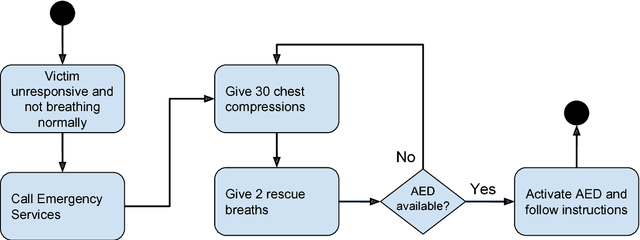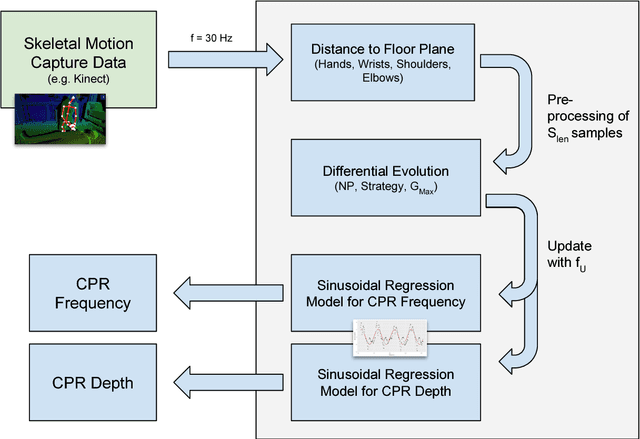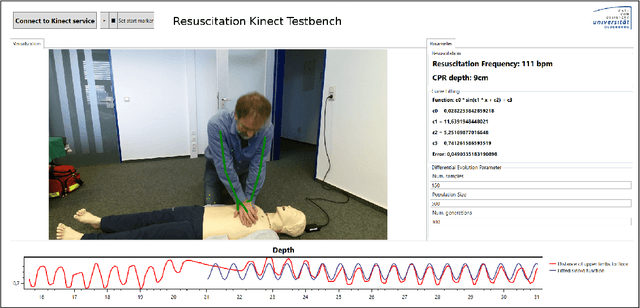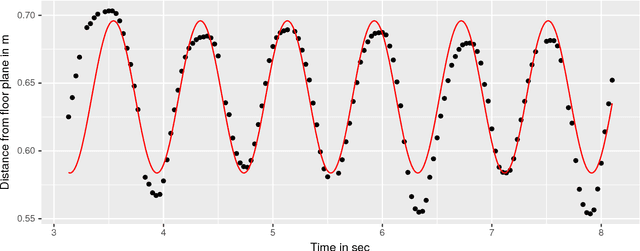Cardiopulmonary Resuscitation Quality Parameters from Motion Capture Data using Differential Evolution Fitting of Sinusoids
Paper and Code
Jun 26, 2018



Cardiopulmonary resuscitation (CPR) is alongside with electrical defibrillation the most important treatment for sudden cardiac arrest, which affects thousands of individuals every year. In this paper, we present a robust sinusoid model that uses skeletal motion data from an RGB-D (Kinect) sensor and the Differential Evolution (DE) optimization algorithm to dynamically fit sinusoidal curves to derive frequency and depth parameters for cardiopulmonary resuscitation training. It is intended to be part of a robust and easy-to-use feedback system for CPR training, allowing its use for unsupervised training. The accuracy of this DE-based approach is evaluated in comparison with data recorded by a state-of-the-art training mannequin. We optimized the DE algorithm constants and have shown that with these optimized parameters the frequency of the CPR is recognized with a median error of 2.55 (2.4%) compressions per minute compared to the reference training mannequin.
 Add to Chrome
Add to Chrome Add to Firefox
Add to Firefox Add to Edge
Add to Edge